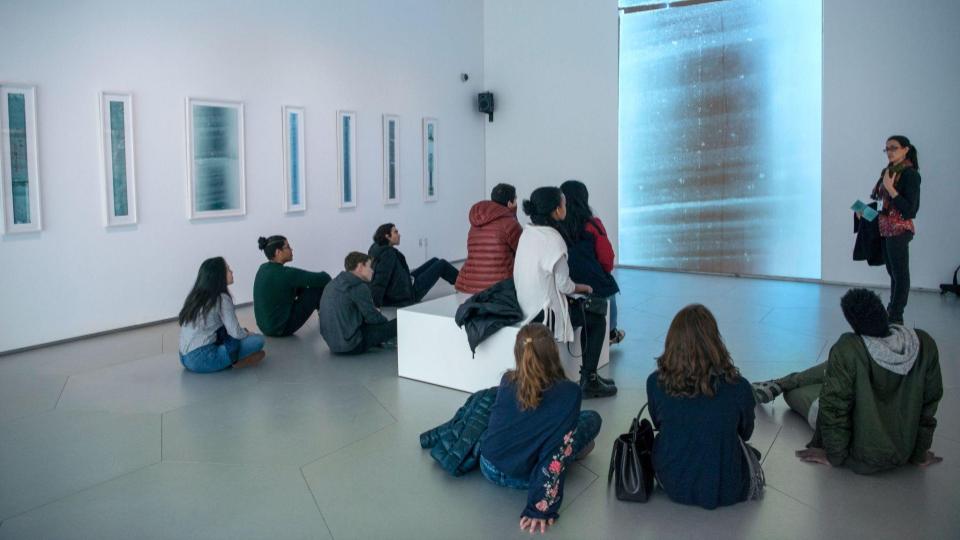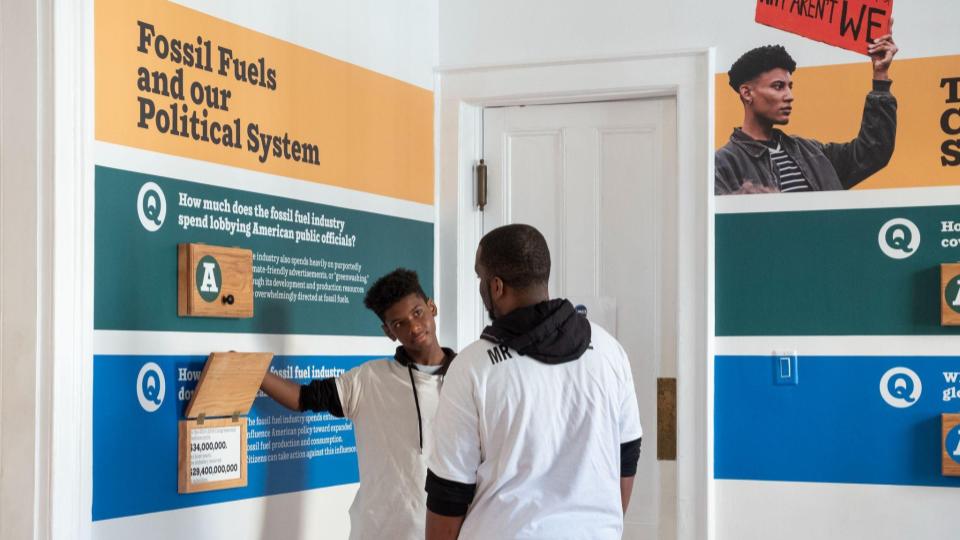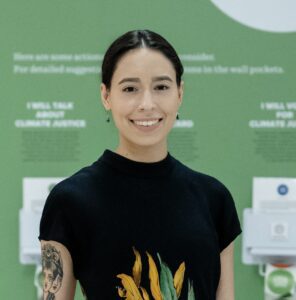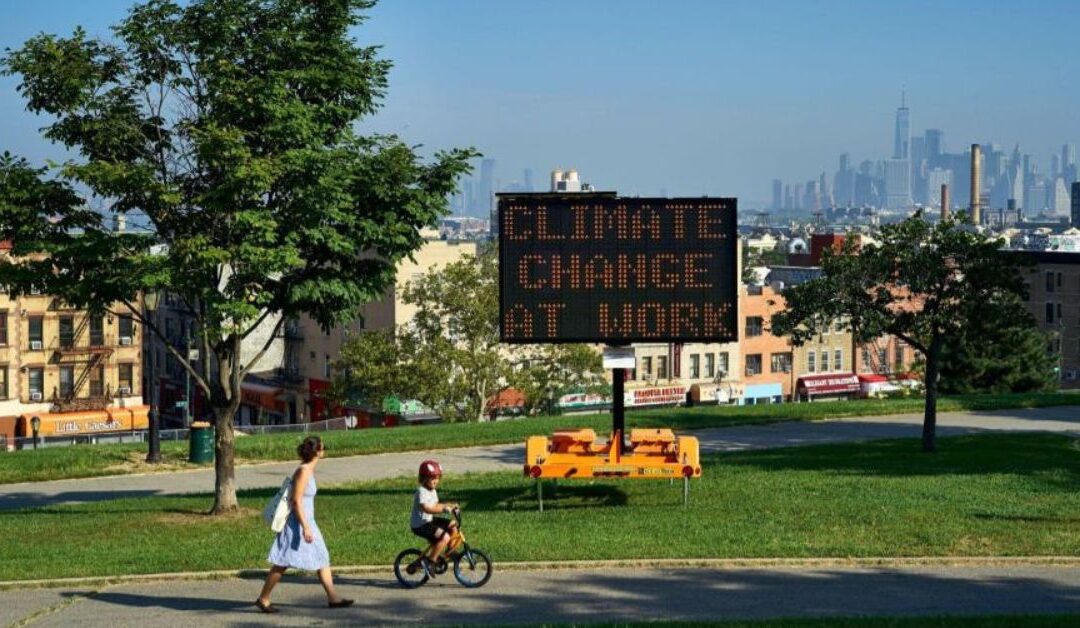GTEC Communications and Media Team Member, Bill Stovin interviews New York Climate Museum, Senior Curatorial Associate, Anais Reyes
Whatever their size or scope, museums serve an indispensable role in the exploration of our culture and natural world.
With the serious environmental threat to the health of our planet, museums are now emerging that focus on climate change.
The first in the United States was formed six years ago in the Soho neighbourhood of New York City. Operating as a pop-up museum, it has explored the impact of climate change using both art and science.
What was the thinking and inspiration behind the idea for a climate museum in New York City?
The Climate Museum was founded by our current director, Miranda Massie, a former civil rights litigator. Her moment of inspiration took place after Hurricane Sandy. She was living in New York and lived through Sandy. She realized that if we don’t have a safe environment to thrive in, then nothing else really matters. Nothing else can take place if our environment is at risk. So, she started to see environmental justice as a civil rights issue, getting back to her original work.
The story is she thought of this idea of the Climate Museum thinking that she heard of it somewhere else, like someone had to have started it. It didn’t exist in the US. There are different climate museums around the world. So, it became her mission to get it in New York City, to make it publicly accessible, both in the knowledge sense and in the transportation sense. We eventually want to have a permanent year-round location in an accessible place where people from all over New York City can visit.
You blended artistic expression with scientific facts about the climate change and the crisis we face. So, what was the impact of that combination?
Well, combining the science side, I’ll add in the history side, and the art side allows us to basically use art as a tool to create an entry point for people. We allow it to open up the conversation for people to respond emotionally and to respond based on their own lived experiences. It makes it really easy to connect with people on a very personal level rather than throwing graphs and data at them which we know doesn’t evoke strong responses to elicit action, actions that we can all take together in a civic and collective form to do something about climate change.
We have also found that we need a very specific action directive. We felt like we created this concept of the action centre in a previous exhibition a couple of years ago, and now we put it with every program that we do.

credit: Sari Goodfriend
And what lessons did you learn from that particular approach?
We’ve learned that people are really hungry for this kind of content. We’ve learned what we call a supermajority of support for climate action, for climate policy. We’ve basically realized that everyone is on the same page. Everyone is worried about climate change. Everyone wants something to be done but because of this like weird, doomy, stifled feeling, we all stay really silent about it. And that just creates a cycle of pessimism. It’s kind of like other people don’t care about this so what can I do?
We’ve found based on research, the first, most basic action that you can take on climate change is to start talking about it because then you start realizing there are so many other people who care about this. There are so many other people who want to be engaged on this issue and who are looking for ways to get involved. That momentum can be put towards civic and collective actions like writing your representatives, voting for people who want climate policy, getting involved in your community and supporting local organizations that are already doing the work on climate justice. So, we really found that that our exhibitions bring people together.
My sense is that you blended this heavy content with also a spirit of hopefulness. Would you talk about that?
I can talk about it in the context of The End of Fossil Fuel. This reminds me of the mural that we had on the back wall. We commissioned a mural by this artist named, R. Gregory Christie. It’s called Making Tomorrow.
We basically split this mural into three pieces – the past, present and future. The past shows essentially the history of how we got here – the industrial revolution, the unjust racist systems that are the core of climate change, that are the core of how fossil fuel emissions have created climate change. The middle is this fight back, this desire for change. It shows people protesting and dealing with all of this challenging information. And then the third side of the mural that we like to focus on in our tours was the future, the potential for something better.
We need to acknowledge our past and all of these problems that got us here. By doing that we are able to create better solutions, able to imagine better futures once we can visualize what a climate safe or climate just future is. And so, in our tours, we show people the progress of this mural and then spend time at the end.

credit: Sari Goodfriend
The show is called The End of Fossil Fuel. So it’s basically like deep decarbonisation. We turn away from fossil fuels and we rely on clean energy. We rely on community oriented solutions. And there is climate justice policy that protects us from climate change. So having a space to start that conversation has also been really helpful.
In that context, there was an opportunity for the public to leave comments to give you input. What sorts of themes were struck?
That’s a good question. It was basically different variations of feeling seen. I think it’s kind of like hope in a general way. People, whether they are looking at the artwork or whether they are looking at other types of content on the wall, they find places to connect to their own personal experiences.
I used to live in Arizona, and it was really, really hot. I remember that, or I remember I used to have family who live in Cancer Alley in Louisiana. So, there would be these different conversations of people inserting themselves. And then when you got to the point at the end of the exhibition in the action centre where you leave your comments, there was a lot of like…I feel enlivened, I feel hopeful, I feel empowered. I feel one of my favorite comments from the show was something like, I feel at home. I feel like this is a place that I didn’t know that I needed. So, there is this really basic emotional connection that happens. It allows people to feel something different when it comes to climate change which is really what we want. We really want people to feel engaged and ready to do something about it in a positive way.
And you’ve been working at the Climate Museum for the past six years. What effect has this had on you?

Anais Reyes, Senior Curatorial Associate, NY Climate Museum
As soon as I started school again, I was like, oh, we know the science. There are these other barriers – political, social and economic barriers to why we haven’t done anything about climate change. That really helped me understand you don’t have to be a climate scientist to act on climate change to get involved. Everyone comes from their own personal experience, and no matter what that is, there is a way to tie it into climate change and how you can bring people together to get engaged on this issue.
I really like when this question comes up because I feel I can relate to a lot of people. I was so worried about it too. I was looking for a way to engage, and I found the museum and it has helped me basically understand climate change as an issue differently, and understand the human aspect of what do we need to do. How do we mobilize each other?
What would you suggest to other entities, whether they are groups, municipalities, governments who are contemplating doing something similar as your organization has done. What should they consider? What are those important elements?
We talk about how the arts and culture are such an important tool to tackle climate change. We need every tool in the toolbox. So, arts and culture are super valuable as part of the collage of things that we could be doing. We tell people that museums basically have these super powers because they are super popular and trusted by the public and there are spaces for emotional vulnerability and connection. So, all of those things together make it really popular. It makes it a really powerful tool to address social issues of all kinds and specifically climate change in this context.
There is really strong research being done on the potential of museums to evoke climate conversation and how they are doing it to put that public trust to good use and kind of change what is happening. From our perspective it would be really important to not just teach about climate science but teach about climate justice. We also think it’s really important to have this action aspect. You can’t just build up these emotions and not have an outlet for them to do something about it. By the time they’ve seen a show like this, they want to do something.
So we are really excited for the potential of more projects like this to pop up. We would be really excited for this to become some type of cultural transformation. Miranda jokes a lot about being the first climate museum in the U.S., but it should be like Nashville Climate Museum, Chicago Climate Museum. We are excited by that potential.
And what is the current status of the Climate Museum in New York City?
So, we just closed The End of Fossil Fuel. We are working towards a permanent year-round location. We’ve functioned on a pop-up model for the past few years. We shut down this past show. We are trying to figure out our next show, but it’s kind of too early to say where and when it will be. We are trying to collaborate with other organizations and other museums to bring collaborative exhibitions to their spaces, but for now it’s a little bit of an in-between period for us because we just closed the show and we are working towards our next show and we are working towards a permanent location.
Okay. Thank you very much.
Thank you.
(This interview has been edited for brevity.)
Read articles on climate change, sustainability, education, and more from GTEC’s Communication & Media (formally GTEC Blog)!
GTEC’s Climate Response Centre will be Canada’s first centre that combines a source of relevant and accessible educational and community development programming, and a centre of evolving community-based expertise about responding to climate change.

